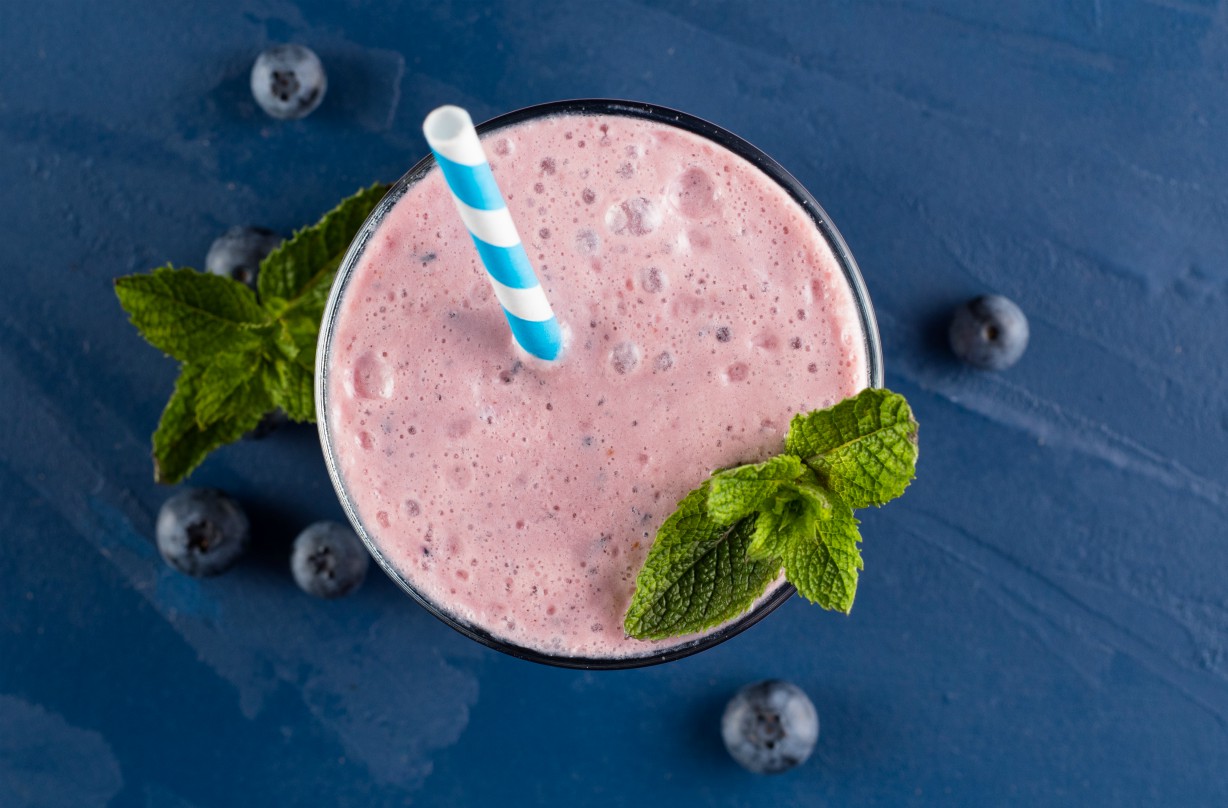The Exante diet - how does it work and how much weight can you lose?
The Exante Diet is a low-calorie meal replacement plan designed to burn fat and help users lose weight quickly


The Exante diet is a meal replacement plan which helps people to lose weight by providing a calorie deficient diet.
Nutritional therapist Aneequa Godart explains: “The Exante diet is a low calorie, meal replacement plan which can be followed strictly by consuming only Exante products, or as part of a balanced weight loss plan combined with other low calorie meals. The aim of the lower-calorie Exante Diet plan is for your body to go into a state of ‘ketosis’."
Ketosis occurs when you eat fewer calories than you need, meaning that within two to four days your body will start to burn its fat reserves to produce the energy you need to function.
Meal replacement plans have long been popular amongst those looking for dramatic results, and the Exante Diet is the latest plan to join Cambridge diet and SlimFast in the meal replacement world.
Like juicing diets, meal replacement plans can offer very fast results but immediate weight loss can be difficult to maintain. The strictest plans should only be used in the short term
What is the Exante diet?
The Exante diet is a meal replacement plan that includes shakes, bars, soups, meals and desserts. They can be ordered online and are delivered directly to the customer’s door.
There are a few Exante plans to choose from, as listed below - customers can either opt to consume mainly Exante products or to eat a selection of them alongside low-calorie meals. Before choosing which plan to follow, you'll need to decide your weight loss aims (short term or sustainable) and be aware of your current BMI
Parenting advice, hot topics, best buys and family finance tips delivered straight to your inbox.
It is also worth considering how many calories you burn a day, the average person burns more than 1800.
The Exante 800
The Exante 800 diet is designed to help people lose weight quickly. It is suitable for healthy adults with a BMI of 30+. Followers consume three Exante shakes a day, as well as 200 calories of healthy snacks, such as fruit or boiled eggs. Signing up to a two-week plan costs £2.85 per day, and in return customers receive a box of 42 meal replacement sachets and a shaker. The four-week plan costs £2.50 per day, includes 84 meal replacement sachets, plus a shaker and one water enhancer. A monthly subscription is also available.
The Exante 1200
The Exante 1200 diet is a more flexible plan and is suitable for those with a BMI between 25 and 30. On this plan, followers eat two Exante products, plus a 600 calorie meal and 200 calories of healthy snacks daily. Followers can buy a 'Mix and Match 50 Bundle' for £60, which includes meal replacement shakes, as well as breakfast pots, soups, bars and sweet treats.
The Exante 5:2
The Exante 5:2 is designed for people who want to be able to exercise on the plan. It includes five days of normal healthy eating, within the recommended intake of calories of 2,000 for women and 2,500 men. This is then followed by two ‘fasting’ days when you eat three extant meal replacement products, plus high protein food to reduce your intake to 800 calories. The Exante 5.2 Diet Box, priced £49.99, contains 48 meals replacement, including soups, shakes, treat bars and breakfast pots.
Research has shown that people usually achieve greater weight loss when combining their diet with exercise.

How much weight can you lose on the Exante diet?
Followers of the Exante diet can lose several pounds a week and some have reported losing up to 10 stones altogether. Nutritionist Aneequa Godart warns that the Exante diet should not be used as a long-term option. She told us, “Very low-calorie diet plans, such as the Exante diet, are designed for a maximum of 12 weeks and are not suitable to use for long-term weight loss. However, they can be a way to kickstart a healthy eating plan for those who are clinically assessed as obese.
"As Exante is a low carb diet, similarly to the military diet and any other low calorie diets which bring the body into a state of ketosis, you can experience water weight loss rather than fat loss in the initial stages. When our carb intake is reduced, so are our glycogen stores in the muscles. Glycogen is responsible for water retention, meaning when its levels drop, our water levels do too.”
Studies have also shown that very low-calorie diets can help people with type 2 diabetes to lose weight and reduce their blood glucose profile. However, this should be discussed with your GP before embarking on the diet plan.
What do you eat on the Exante diet?
Depending on which plan you follow you will either eat three Exante meal replacements a day or two Exante meal replacements and a 600 calorie meal. On both the Exante 800 and the Exante 1200, you also eat 200 calories of healthy snacks.
When preparing your own meals, Exante recommends aiming for 50% of your plate to be vegetables, 25% to be lean protein and 25% to be healthy carbs.
An example day on the Exante 800 diet:
- Breakfast: Meal replacement porridge pot (original, cinnamon, chocolate or redcurrant)
- Lunch: Meal replacement soup: (Chicken and leek, red Thai chicken, mushroom, butternut squash and sweet potato)
- Dinner: Meal replacement pot (pasta Bolognese, Thai style noodles, Indian daal)
- Snacks (200 calories in total): Exante high protein snack bites (lemon and coconut cake, carrot cake), Exante snack shot (fruits, nuts & seeds, sweet chilli & honey) or fresh fruit and vegetables
An example day on the Exante 1200 diet:
- Breakfast: Meal replacement shake (chocolate, strawberry, banana, vanilla, cherries & berries)
- Lunch: Meal replacement soup: (Chicken and leek, red Thai chicken, mushroom, butternut squash and sweet potato)
- Dinner (600 calories in total): Choose from a large selection of healthy low calorie meals such as these and you can even add in a dessert, such as an Exante gooey chocolate pudding
- Snacks (200 calories in total): Exante high protein snack bites (lemon and coconut cake, carrot cake), Exante snack shot (fruits, nuts & seeds, sweet chilli & honey) or fresh fruit and vegetables
However, Aneequa cautions that this should not be considered as a long-term diet plan.
She says: “Replacing high-calorie snacks with the low calorie Exante options such as bars and shakes is a great alternative for those looking to lose weight.
“However, consuming only low-calorie Exante meal replacements is recommended only for those who have a high BMI and are under the guidance of a weight loss specialist. This diet is not recommended for long-term use, and side effects can include fatigue, constipation and nausea.”
http://www.youtube.com/watch?v=ph3zqb7b3yo
Are you allowed fruit on Exante?
You can eat fruit on the Exante diet, but it counts towards your daily calorie intake. Read our guide on the best low calorie fruits to ensure you stay within the guidelines.
Here are some examples of the calories in popular pieces of fruit:
- Small banana: 52
- Small apple: 32
- Orange: 36
- Satsuma: 20
- 10 green grapes: 20
- 10 strawberries: 30
- 1 heaped tablespoon of blueberries: 8
- 100g of mango: 39
- 100g of cherries: 36
- 100g Cantaloupe melon: 13
Is the Exante diet safe? A nutritionist's verdict
While the Exante diet is safe to follow, it is a very low calorie diet, particularly the Exante 800 plan. Although it might be a good way to kickstart your weight loss journey, it is worth considering switching to the Exante 1200 plan or a long term healthy eating regime once you begin to lose weight.
Aneequa Godart says, “Very low-calorie diets are not designed for long-term weight loss and should be incorporated as part of a wider weight management plan under supervision, for a maximum of 12 weeks. It is recommended to consult your GP if you are following an Exante only plan. After 12 weeks I would recommend for the client to start a well balanced healthy eating programme."
If you plan to use the Exante diet to kickstart your weight-loss journey, you could then consider switching to a healthy eating plan like the Mediterranean diet.

Emily-Ann Elliott is an experienced online and print journalist, with a focus on health, travel, and parenting. After beginning her career as a health journalist at The Basingstoke Gazette, she worked at a number of regional newspapers before moving to BBC News online. She later worked as a journalist for Comic Relief, covering stories about health and international development, as well as The Independent, The i, The Guardian, and The Telegraph. Following the birth of her son with neonatal meningitis, Emily-Ann has a particular interest in neonatal health and parental support. Emily-Ann has a degree in English literature from the University of Newcastle and has NCTJ and NCE qualifications in newspaper journalism.